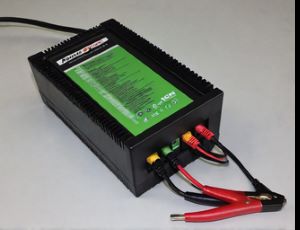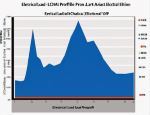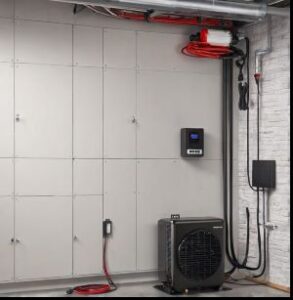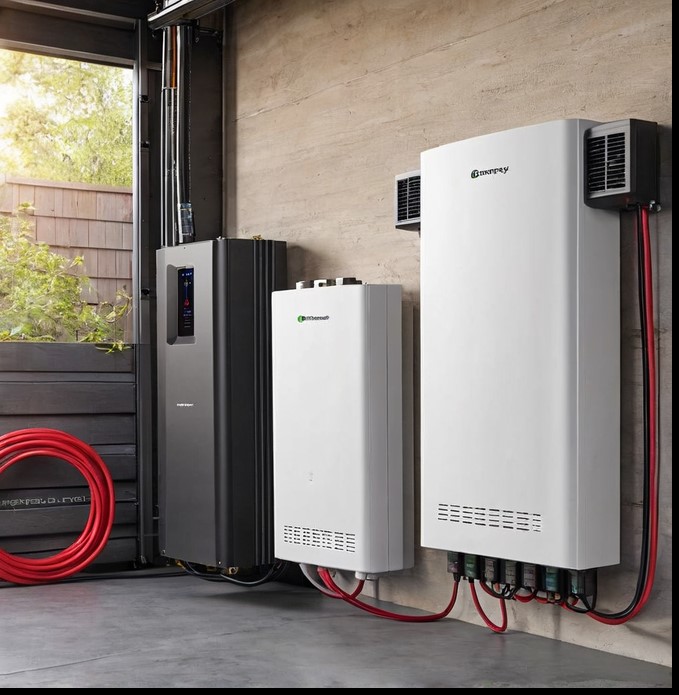How to SIZE A BACKUP BATTERY POWER SYSTEM FOR YOUR HOME
Table of Contents
Power Up with Battery Root
At Battery Root, our mission is to guide you through the diverse landscape of home battery backup without solar. As advocates for battery energy storage, we specialize in unbiased reviews of various residential backup battery power solutions.
Whether you’re navigating the realm of energy storage for home backup power or aiming to optimize your home’s efficiency, our comprehensive reviews are your trusted resource. Empower your decisions towards a greener future with insights from our expert evaluations of home battery systems.
Looking for home battery backup without solar?
As power outages become increasingly common, the need for a reliable backup battery power system for homes has gained prominence. Recently, with the advancement and popularity of batteries, home battery backup without solar has become a trend. Sizing the right battery backup is a crucial step in ensuring your household remains powered during unexpected outages.
In this in-depth guide, we’ll unravel the intricacies of sizing a backup battery power system, answering key questions such as how to calculate battery backup size, determining the required size, sizing backup power, and understanding battery storage requirements and recharge methods.
The first step in sizing a battery backup system is to assess your household’s power needs.
Consider the essential appliances and devices you want to keep running during an outage. This may include refrigerators, lighting, medical equipment, and communication devices. Make a list of these items along with their power requirements.
To make this step Easier, we provided a list of common household appliances and their wattage (see below)
For each item, note its power consumption in watts (W) or kilowatts (kW). You can find this information on the appliance labels or in the user manuals. In addition, we’ve created a wattage appliance calculator, which aids in the calculation of loads.
Common Household Appliances and Wattage Ranges
| Appliance | Wattage | Quantity | Runtime (H) | Energy (KwH) |
|---|---|---|---|---|
| Refrigerator | 100 – 800 Watts | |||
| Washing machine | 300 – 500 Watts | |||
| Clothes dryer | 1800 – 5000 Watts | |||
| Dishwasher | 1200 – 2400 Watts | |||
| Oven | 1000 – 5000 Watts | |||
| Microwave | 600 – 1500 Watts | |||
| Toaster | 800 – 1800 Watts | |||
| Coffee maker | 800 – 1500 Watts | |||
| Air conditioner | 1000 – 5000 Watts | |||
| Heater (Electric) | 500 – 1500 Watts | |||
| Ceiling fan | 10 – 120 Watts | |||
| Television | 50 – 400 Watts | |||
| Computer | 50 – 500 Watts | |||
| Router and Modem | 5 – 50 Watts | |||
| Lights (LED) | 5 – 20 Watts per bulb | |||
| Total Energy Requirement |
Add-Up the Wattage
Now: Add up the power consumption of all the essential loads to determine your total power requirements. This will give you the minimum power capacity that your battery backup system needs to provide.
The next step..
Determine Backup Power Duration
Determine backup duration: Decide how long you want your backup power to last during an outage. This could be a few hours, overnight, or even several days depending on your preferences and the likelihood of extended outages in your area.
You’ll want to account for how often the equipment runs or how much usage you expect to use the device.
It’s important to take into account the usage patterns of your equipment. For example, your air conditioner will not need to run continuously for 24 hours. By considering the typical runtime of each device, we can tailor the backup duration to suit your specific requirements and ensure efficient use of resources.
Common Appliance Runtime
| Appliance | Daily Usage (Approx.) |
|---|---|
| Refrigerator | 6-8 hours |
| Washing Machine | 1-2 hours |
| Dishwasher | 1-2 hours |
| Television | 3-4 hours |
| Microwave Oven | 5 minutes – 15 minutes |
| Oven/Stove | 1-2 hours |
| Lights | 3-4 hours |
| Air Conditioner | 8-12+ hours |
Great.. now that we know the power requirements and the runtime of the appliances, we can calculate the energy requirement.
Take Control of Your Energy with an Energy Monitor!
Consider Using Our AMAZON© AFFILATE LINKS:
For this next step, You’ll want to pay close attention to your units and ensure, all are either watts or kilo watts and time in hours.
Let’s Multiply…
Calculate total energy requirement: Multiply your total power consumption (step 2) by the desired backup duration (step 3) to calculate the total energy requirement in kilowatt-hours (kWh). This will give you the energy storage capacity needed for your battery system.
Time x Wattage = Energy (Wh / kWh)
For Example:
Power: 800 Watts = 0.8 kW
Runtime: 30 minutes = 0.5 hours
Energy Requirements:
0.8 kW x 0.5 hours = 0.4 kWh
Consider Battery System In-efficiency
Consider efficiency and losses: Account for efficiency losses in the battery system, inverter, and other components. This will ensure that the actual usable energy output matches your calculated energy requirement. As a rule of thumb, you may need to oversize the battery capacity by around 10-20% to account for these losses.
For example, let’s say you have a requirement of 15 kilo-watt hours, the additional capacity will be determined as follows:
Multiply by 1.20 for 20% additional capacity:
15 kWh x 1.2 = 18 kWh
Ready to Continue?
In the next steps, we’ll walk you through how to charge the home battery backup with and without solar. How to accommodate for power demands and a review of installation footprint.
Not Ready for a dedicate Home system, but still looking for a battery backup power solution?
Evaluate Battery Backup Charging Sources
Determine how the battery will be charged. If you’re planning to use solar panels, consider factors such as available sunlight hours, panel orientation, shading, and system efficiency. You’ll need to ensure that the solar generation capacity is sufficient to recharge the battery within your desired backup window.
A grid battery charger, also known as a grid-tied battery charger or simply a battery charger, is a device used to recharge batteries from the electrical grid.
Here’s how a grid battery charger can be used in conjunction with renewable energy sources and the role of a charge controller
Charging Battery Backup Power System from the Electrical Grid

Direct Grid Connection: In its simplest form, a grid battery charger is connected directly to the electrical grid to recharge batteries. This setup is common in applications where batteries are used for backup power or to store surplus energy during off-peak hours for later use.
Grid-Tied Solar Systems: In grid-tied solar photovoltaic (PV) systems with battery storage, a grid battery charger is used to recharge batteries from the grid during times when solar generation is insufficient to meet demand. This helps ensure a reliable power supply and allows homeowners or businesses to take advantage of time-of-use electricity pricing.
Charging from Solar or Renewable Sources
Off-Grid Solar Systems: In off-grid solar systems, where there is no access to the utility grid, a grid battery charger can be used to recharge batteries from solar panels. Solar energy is converted into DC electricity by the panels and fed into the charger, which then charges the batteries.
Hybrid Solar Systems: Hybrid solar systems combine solar PV with battery storage and sometimes a backup generator. A grid battery charger can be integrated into these systems to recharge batteries from solar energy during the day and from the grid or generator during periods of low solar generation or high demand.
Looking for a low cost emergency solar backup battery solution?
Consider Solar Powered Cell Phone Chargers
Consider Using Our AMAZON© AFFILATE LINKS, as an Amazon Associate I earn from qualifying purchases.
Amazon and the Amazon logo are trademarks of Amazon.com, Inc. or its affiliates
Role of a Charge Controller
Voltage Regulation: A charge controller regulates the voltage output from solar panels or other renewable energy sources to ensure that batteries are charged at the correct voltage levels. It prevents overcharging, which can damage batteries, and optimizes charging efficiency.
Current Regulation: Charge controllers also regulate the current flowing from the solar panels to the batteries. This helps prevent overloading of the batteries and ensures that they are charged safely and efficiently.
Battery Protection: Charge controllers protect batteries from excessive discharge by disconnecting them from the load when their voltage drops below a certain threshold. This prevents damage to the batteries and extends their lifespan.
System Monitoring: Many charge controllers feature built-in monitoring capabilities, allowing users to track the performance of their solar or renewable energy system, monitor battery status, and diagnose any issues that may arise.
Now that we know the required battery capacity and how to charge it; we need to size the Inverter.
But first..
What is an Inverter?
An inverter is an electrical device that converts direct current (DC) power into alternating current (AC) power. It plays a critical role in various applications, from providing backup power during outages to enabling off-grid electricity generation from renewable energy sources such as solar panels or wind turbines. Here’s an overview of what an inverter is, why you need one, and how to size it to meet power demand:
Inverters utilize electronic components such as transistors, diodes, and capacitors to modulate the DC input voltage and produce a sinusoidal AC output waveform, which closely resembles the type of electricity supplied by utility grids.
Why Do You Need an Inverter?
Power Backup: Battiers store the power we need during the grid outage or emergency, the inverter convertes the battery power into usable AC power. They can keep essential appliances and devices running, ensuring continuity of operations in homes, businesses, and critical facilities such as hospitals or data centers.
Off-Grid Power Systems: In remote locations or areas without access to the utility grid, inverters are essential components of off-grid power systems. They convert DC power generated from renewable energy sources like solar panels or wind turbines into usable AC power for residential, commercial, or industrial applications.
Grid-Tied Systems with Solar Energy: In grid-tied solar photovoltaic (PV) systems, inverters are used to convert DC power generated by solar panels into AC power that can be fed back into the utility grid. This allows homeowners and businesses to offset their electricity consumption and even earn credits through net metering programs.
RVs, Boats, and Vehicles: Inverters are also utilized in recreational vehicles (RVs), boats, and vehicles equipped with electrical appliances. They enable DC power from batteries or vehicle alternators to be converted into AC power for running onboard equipment, appliances, and electronics.
What type of inverter would be applicable for a Battery Backup Battery System?
Standalone Inverters (Off-grid Inverters): Designed for use in off-grid solar PV systems where there is no access to the utility grid. They convert DC power from batteries or solar panels into AC power for use in homes, cabins, or remote locations.
Hybrid Inverters: Combines the functions of standalone and grid-tied inverters, allowing for both grid-tied and off-grid operation. They can work with solar panels, batteries, and the utility grid, providing flexibility and resilience in power supply. Hybrid inverters are commonly used in residential and commercial settings where energy storage and grid independence are desired.
Battery-Based Inverters (Inverter/Chargers): Designed for use in battery-based power systems, such as off-grid or hybrid solar systems with energy storage. They not only convert DC power from batteries into AC power but also include charging functionality to replenish the batteries from solar panels or the grid. These inverters often feature advanced battery management and monitoring capabilities.
Solar Powered Cell Phone Chargers
Amazon and the Amazon logo are trademarks of Amazon.com, Inc. or its affiliates
How to Size an Inverter to Power Demand
Assess Power Requirements: Determine the total power demand of all connected appliances, devices, and loads that the inverter will be supplying. Consider both the continuous power requirements and any peak or surge power demands during startup or operation.
Select Inverter Type: Choose the appropriate type of inverter based on the application and power source. Options include standalone inverters for off-grid systems, grid-tied inverters for solar PV installations, hybrid inverters for combined grid-tied and battery backup systems, and portable inverters for mobile applications.
Calculate Inverter Capacity: Size the inverter’s capacity to accommodate the total power demand, including any safety margin or headroom. Consider factors such as appliance starting currents, duty cycles, and simultaneous loads to ensure the inverter can handle peak power demands without overloading.
Consider Battery Bank Sizing: If the inverter is part of an off-grid or backup power system, ensure that the battery bank’s capacity is sufficient to supply the required energy during periods of low or no input power. Proper sizing of the battery bank ensures adequate energy storage for continuous operation and system reliability.
Consult Manufacturer Guidelines: Refer to the manufacturer’s specifications and guidelines for the selected inverter model to ensure compatibility with the intended application and adherence to safety and performance standards.
Professional Consultation: For complex or large-scale installations, consider seeking assistance from qualified professionals or electrical engineers to accurately size and configure the inverter system for optimal performance and reliability.
Looking for an emergency solar backup battery solution?
Consider Using Our AMAZON© AFFILATE LINKS, as an Amazon Affiliate, we earn from qualifying purchases.
Amazon and the Amazon logo are trademarks of Amazon.com, Inc. or its affiliates
Peak power demands play a crucial role in determining the appropriate sizing of inverters for various applications, especially in off-grid or backup power systems. An inverter’s capacity must be sufficient to handle the maximum power demand that the system may experience at any given time. Here’s how peak power demands affect inverter sizing:
Consider Peak Power Demands

Peak power demand refers to the maximum amount of power that a system requires at any given moment. This demand can occur due to simultaneous operation of multiple appliances, starting currents of motors, or sudden power surges.
Inverter Capacity: The capacity of an inverter is typically rated in terms of its continuous power output, often expressed in kilowatts (kW) or watts (W). However, inverters are also rated for their peak power handling capability, which is the maximum amount of power they can deliver for short durations, usually a few seconds to a few minutes.
Sizing Considerations: When sizing an inverter for a system, it’s essential to consider both the continuous power requirements and the peak power demands of the connected loads. Inverter capacity should be chosen such that it can comfortably handle the peak power demands without overloading or causing the inverter to trip.
Appliance Starting Currents: Appliances with motors, such as refrigerators, air conditioners, and pumps, often require higher starting currents than their rated running currents during startup. The inverter must be able to supply this additional surge of power without exceeding its peak power handling capability.
Duty Cycle and Load Profiles: Understanding the duty cycle and load profiles of the connected appliances is crucial for sizing the inverter appropriately. Some appliances may have intermittent or cyclical power demands, which can affect the overall peak power requirements of the system.
Safety Margin: It’s advisable to incorporate a safety margin when sizing the inverter to account for unexpected spikes in power demand or future expansions of the system. A safety margin ensures that the inverter operates within its rated capacity under all conditions, reducing the risk of overload or system failure.
Battery Bank Sizing: In off-grid or backup power systems, inverters are often coupled with battery banks to store energy for use during periods of low or no solar or grid power. Proper sizing of the battery bank is also crucial to ensure it can provide the required peak power output to supplement the inverter during high-demand periods.
It is recommended to identify any appliances or devices with high starting or surge power requirements, such as refrigerators or air conditioners. Ensure that your battery backup system can handle these peak loads without overloading.

Battery Backup Power System Space Requirements
Consider the physical space available for installing batteries, inverters, charge controllers, and other system components. Ensure adequate ventilation and clearance around the equipment to dissipate heat and facilitate maintenance access.
This information can be found in the manufacturer specifications. In addition, you will want to add additional spacing around equipment for code requirements. It is recommended to consult with a local electrician to verify space requirements and overall project specifications.
System location and considerations for installing a Battery Backup Power Supply
Indoor vs. Outdoor Installation: Battery backup systems can be installed indoors or outdoors, depending on space availability, environmental conditions, and safety considerations. Indoor installations offer protection from weather elements and temperature extremes, while outdoor installations may require weatherproof enclosures and protection against theft or vandalism.
Ventilation and Temperature Control: Ensure proper ventilation and temperature control in the installation location to prevent overheating and prolong battery life. Adequate airflow helps dissipate heat generated by the batteries and other system components, while temperature regulation prevents performance degradation in extreme hot or cold conditions.
Accessibility and Maintenance: Choose a location that allows for easy access to the battery bank, inverters, and other critical components for inspection, maintenance, and troubleshooting. Accessibility facilitates routine maintenance tasks such as battery watering, terminal cleaning, and system monitoring.
Electrical Wiring and Safety: Install the battery backup system in compliance with local electrical codes and safety standards. Ensure proper grounding, wiring, and electrical protection devices to prevent electrical hazards and ensure safe operation. Consider proximity to existing electrical panels, utility connections, and load distribution points for efficient wiring and installation.
Security and Theft Prevention: Implement security measures to protect the battery backup system from theft, unauthorized access, or tampering. Install security cameras, locks, and alarms, and consider using tamper-resistant enclosures or mounting solutions to deter theft and vandalism.
It’s recommended to consult with a professional for verification of system size
It’s recommended to work with a qualified installer or engineer who can assess your home’s energy needs and design a customized battery backup system. They can help you select the appropriate battery technology, capacity, inverter size, and other components to ensure reliable backup power.
By following these steps and seeking expert guidance, you can size a home battery backup system that meets your needs for reliable emergency power during outages.















